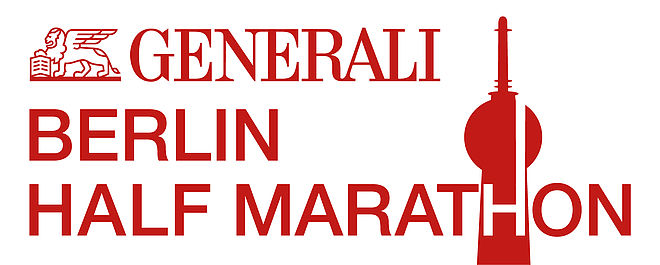After an absence of 68 years, the Olympic flame finally returned to Berlin,
scene of the 1936 Olympic Games. It moved everyone in the truest sense of the
word: the runners permitted to bear the torch, their families and the
spectators who shared in this demonstration of peaceful international sporting
friendship in the run-up to the 28th Summer Olympics in Athens (13–29
August).

align="right" />Many of the relay runners were seasoned Olympic medal winners.
As cool-headed as they may have been beforehand, even they had butterflies in
their stomach just before it was their turn – and some even forgot what
they were supposed to do during the pass-over.
It wasn’t much different for the runners selected by sponsors Samsung
and Coca Cola in the category “man and woman on the street”. At any
rate, the lavatories on the coaches dropping off the runners at their starting
points seemed to be constantly engaged!
Although they only had to run 400 metres, afterwards many of the
runners’ throats were as parched as if they’d just done an
hour’s hard training!
The Olympic torch’s world tour began in Athens on 25 March
2004
Visiting all five continents (including South America and Africa), this
34-city, 27-country tour is being shared by over 11,000 torch-bearers. In fact
this is the farthest the torch has ever travelled in Olympic history. The flame
was brought from Munich (the host of the 1972 Olympics) to Berlin, and a day
later continued its journey to Stockholm, scene of the Games in 1912.
The torch
Made of metal and olive wood, the torch weighs 700g and is 68cm long. Its
design is based on an olive branch, a sacred item in Athens of old and nowadays
a symbol of peace, and so the torch is spreading the Olympic message all over
the world. The symbol of the Olympic Games is the kotino or olive branch woven
into a wreath, which was the trophy awarded to Olympic champions in ancient
Greece.
The flame arrived at Tegel Airport in Berlin from Munich on board two Boeing
747s accompanied by a large retinue. Gymnastics world champion Eberhard Gienger
transported the flame in a spectacular parachute jump into Berlin’s
Olympic Stadium, where it was received by Governing Mayor Klaus Wowereit.

align="left" />Other members of the reception committee included Mayor of
Athens Dora Bakoyiannis, German Minister of the Interior Secretary Otto Schily,
DSB (German Sports Federation) President Manfred von Richthofen, NOC President
Dr Klaus Steinbach, IOC Vice President Thomas Bach – and the 94-year-old
Siegfried Eifrig, who back in 1936 was the final runner in the torch relay from
Athens and bore the torch along the avenue Unter den Linden to Lustgarten. In
fact it was at the 1936 Berlin Olympics that the tradition of the Olympic torch
relay was introduced.
Kathrin Boron, the most successful female rower in the world, was the first
of the 132 runners to carry the Olympic flame in the Berlin leg.
All change at the Marriott
The day before, the torchbearers had been kitted out at Berlin’s Hotel
Marriott. The runners were given their official clothing comprising shorts,
running top, socks and sweatband. And they were also presented with a
certificate of participation in the Athens 2004 Olympic Torch Relay signed by
Jacques Rogge, the President of the IOC, and Gianna Angelopoulos-Daskalaki, the
President of the Athens 2004 Organising Committee.
Many of the runners all but disappeared in their XL and even XXL gear, the
shorts sometimes reaching right down to their knees. On the big day, the
runners were given brief instructions on details such as how to pass on the
torch and how long they had to wait (5 seconds) until the flame successfully
caught.

align="right" />The participants were then taken by coach to their individual
starting points. Although most of the runners didn’t know each other
personally, their faces were certainly familiar as they suddenly realised they
were sitting next to, say, Wolfgang Behrendt, the boxing champion at the 1956
Melbourne Olympics, or Dr Motte, the famous founder of Berlin’s Love
Parade techno festival. Of course, they all took advantage of the bus ride to
introduce themselves.
Prof Wolfgang Maennig, Olympic champion in the German rowing eight, had to
perform a double stint by running 800m as his ‘forerunner’ had
disappeared. Peter Hanisch, the president of the Berlin Sports Federation, also
took part from the word go at the Olympic Stadium as an escort runner. At the
Reichstag and the adjacent Federal Chancellery, the flame passed between
renowned canoeist and Olympic champion several times over Birgit Fischer and
Olympic speed skating champion Claudia Pechstein.
The photographers and enthusiastic spectators were out in force here, just
as they were for boxer Henry Maske on Alexanderplatz, Katharina Witt on
Potsdamer Platz, and IOC vice president Thomas Bach at the corner of Unter den
Linden and Wilhelmstrasse – so much so that it was all but impossible for
the escorts to get through. Samsung’s and Coca Cola’s armies of
volunteers had already distributed flags as souvenirs among the spectators.
Bernd Hübner, who has already run the real,- BERLIN MARATHON 30 times,
had the honour of bearing the torch along Badensche Strasse, sharing it with
his escort runner and cheered on by his roaring fans. Bernd Hübner summed
up the mood of all the participants:
“It was a dream”
“It was a great moment for me to be able to take part and it passed by
all too quickly. It was a dream I would have loved to go on dreaming.”
What more can be said?!
Parts of the blue line marking the route of last year’s real,- BERLIN
MARATHON could still be seen – for example when Horst Milde (former Race
Director) sped along Alt-Moabit into Invalidenstrasse. He’d been handed
the flame by the German junior épée fencing champion Toni Kneist
from Schwedt, who had only learned the previous evening that he’d been
selected as one of the lucky torchbearers. Horst Milde then fittingly passed on
the flame to marathon runner Beatrice Karanassios. Ms Karanassios successfully
participated in the real,- BERLIN MARATHON a number of times, speaks Greek, is
married to a Greek – and will be working in an honorary capacity at the
Olympic Games in Athens.
Finally it was time for marathon route scout John Kunkeler to put in an
appearance as the escort runner with Thomas Bach, the final
runner
The 132nd and last runner to reach the finish at Pariser Platz was IOC Vice
President Thomas Bach, who arrived precisely as the Athenian Mayor Dora
Bakoyiannis – speaking outstanding German – was inviting the world
to Athens. Thomas Bach then used the flame to ignite the cauldron on the stage
in front of the Brandenburg Gate.
The show was hosted by Rudi Cerne, who endeavoured to elicit from Mayor
Klaus Wowereit whether Berlin would be applying to stage the Olympics. The
President of Samsung, the torch relay’s sponsor, made special mention in
his address of the world record set at last year’s real,- BERLIN
MARATHON.
At that point things came full circle when 1936 torch relay runner Siegfried
Eifrig (introduced to the crowd by Rudio Cerne as “Fritz” Eifrig)
was invited onstage. He was unable to conceal his emotion when he made a point
of stressing that back then he had simply been representing his team,
Charlottenburg Sports Club.
Siegfried Eifrig was followed by a varied stage programme, many of the huge
crowd staying until the end to watch the live transmission of the EURO 2004
semi-final clash between the Portuguese and Dutch soccer teams.
The official farewell ceremony for the Olympic flame was held on the
premises of Dresdner Bank as the flame set off for the next leg of its tour in
Stockholm.
The Olympics in Berlin again?
The end of a great day for global Olympic sport drew to a close. The
enthusiasm shown by the people of Berlin for sport and the Olympic flame
demonstrated that they had been truly infected by the enthusiasm of Athens
– and perhaps inspired to hold the Olympics in Berlin again?!
Horst Milde, Bernd Hübner and John Kunkeler


